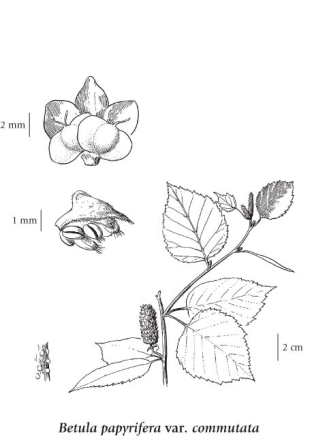E-Flora BC: Electronic Atlas of the Flora of British Columbia
Betula papyrifera var. commutata Marsh. (Regel) Fernald
paper birch Betulaceae (Birch family) Introduction to Vascular Plants
|
|||||||||||||||

